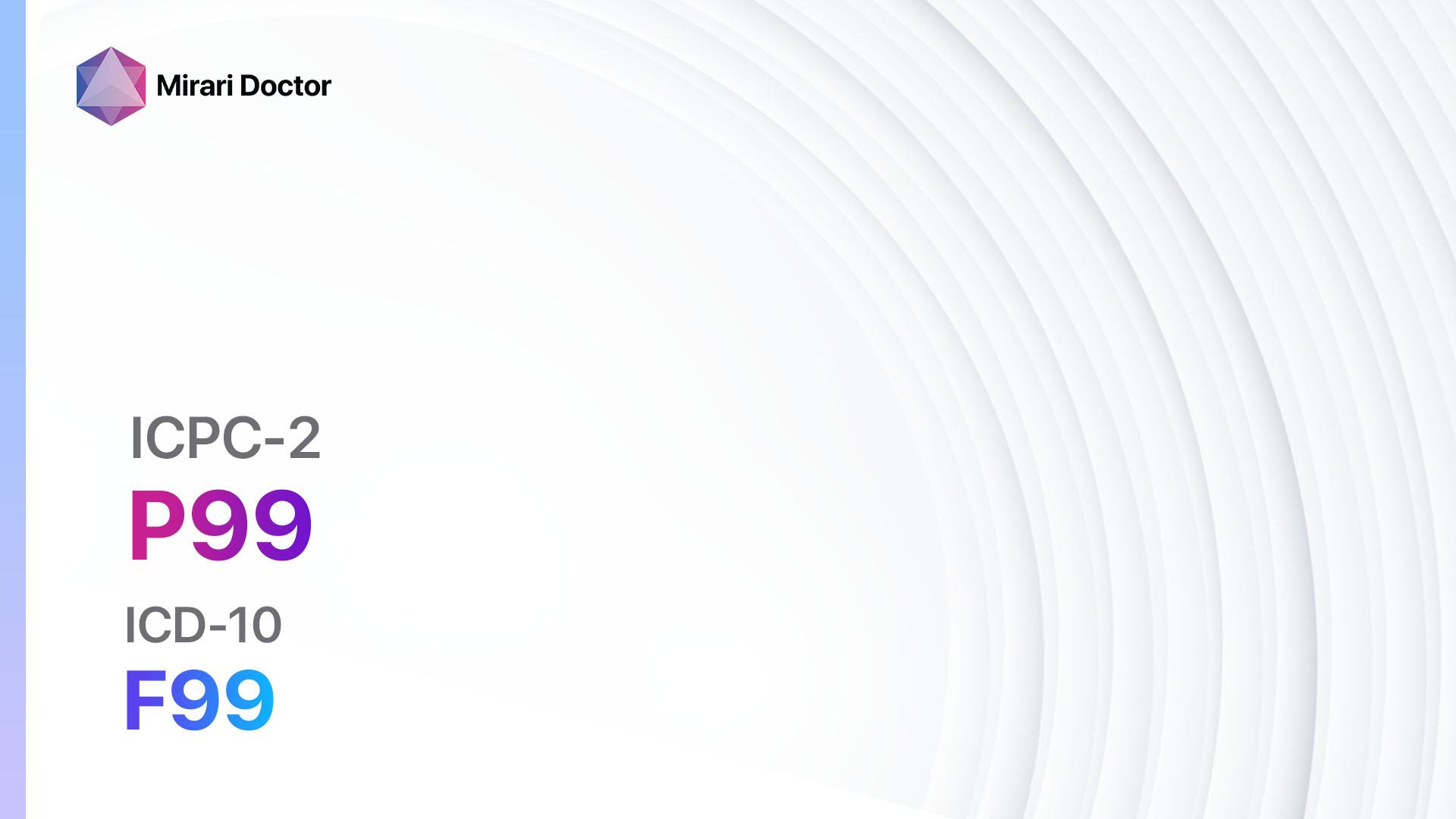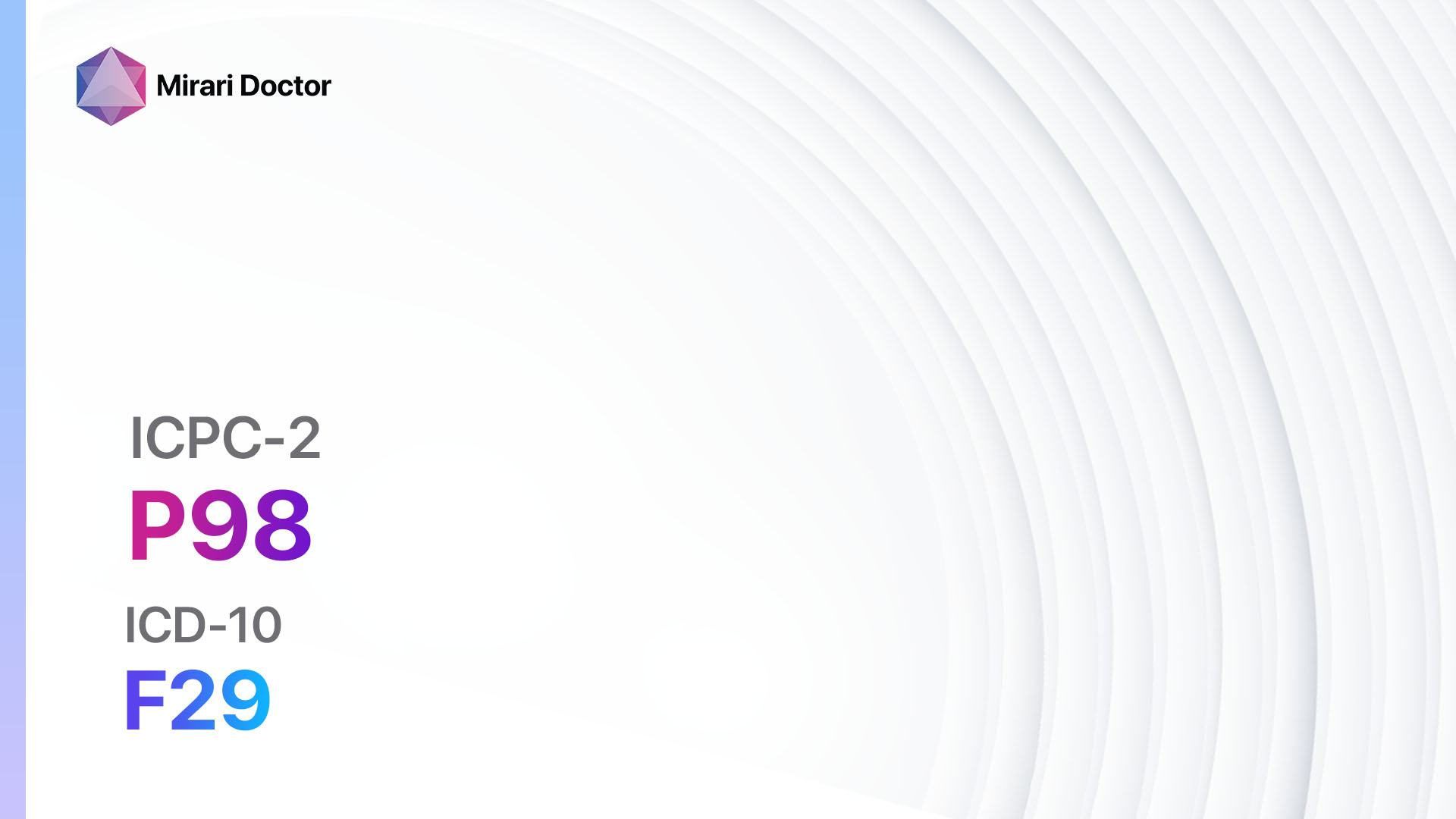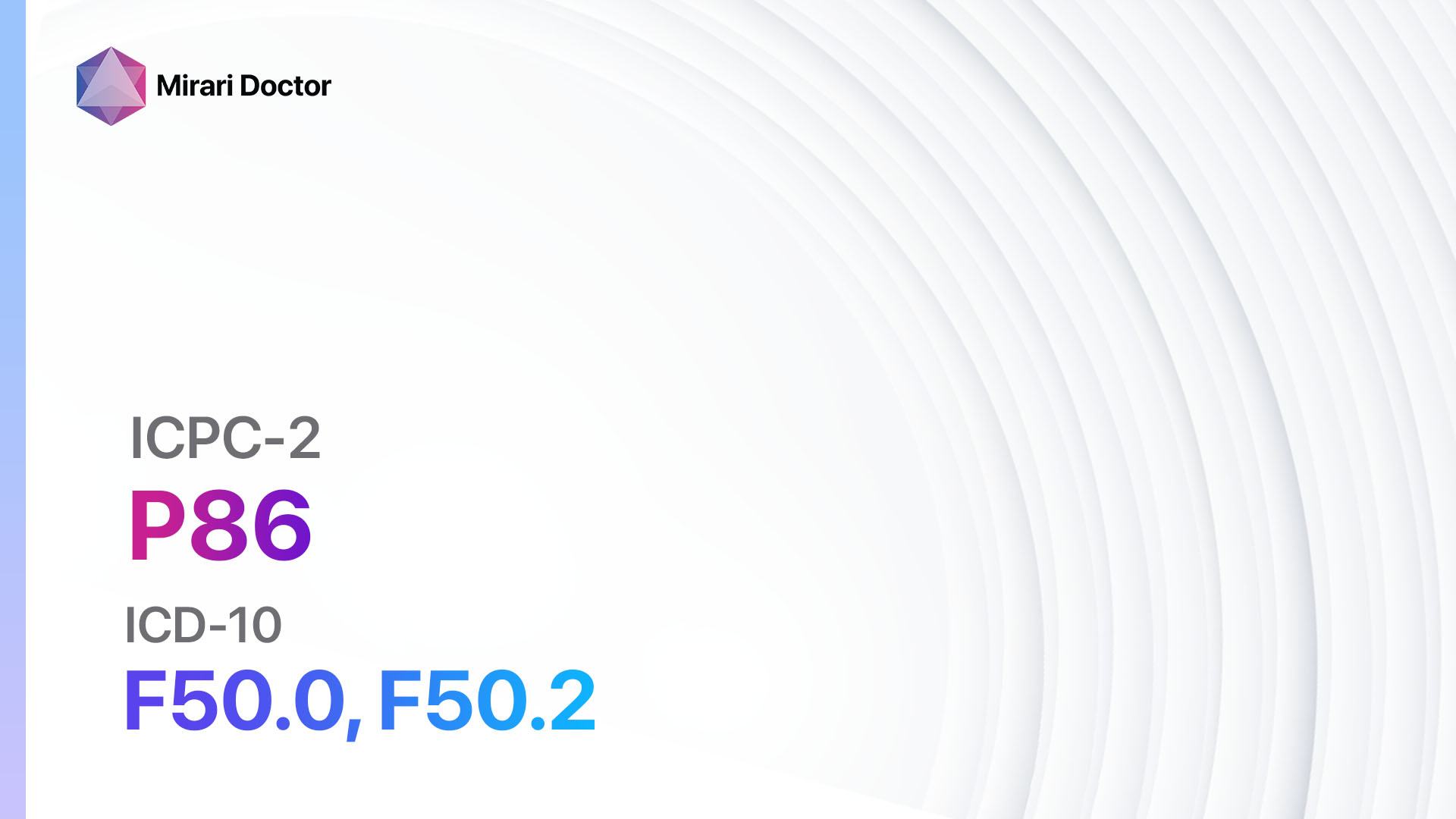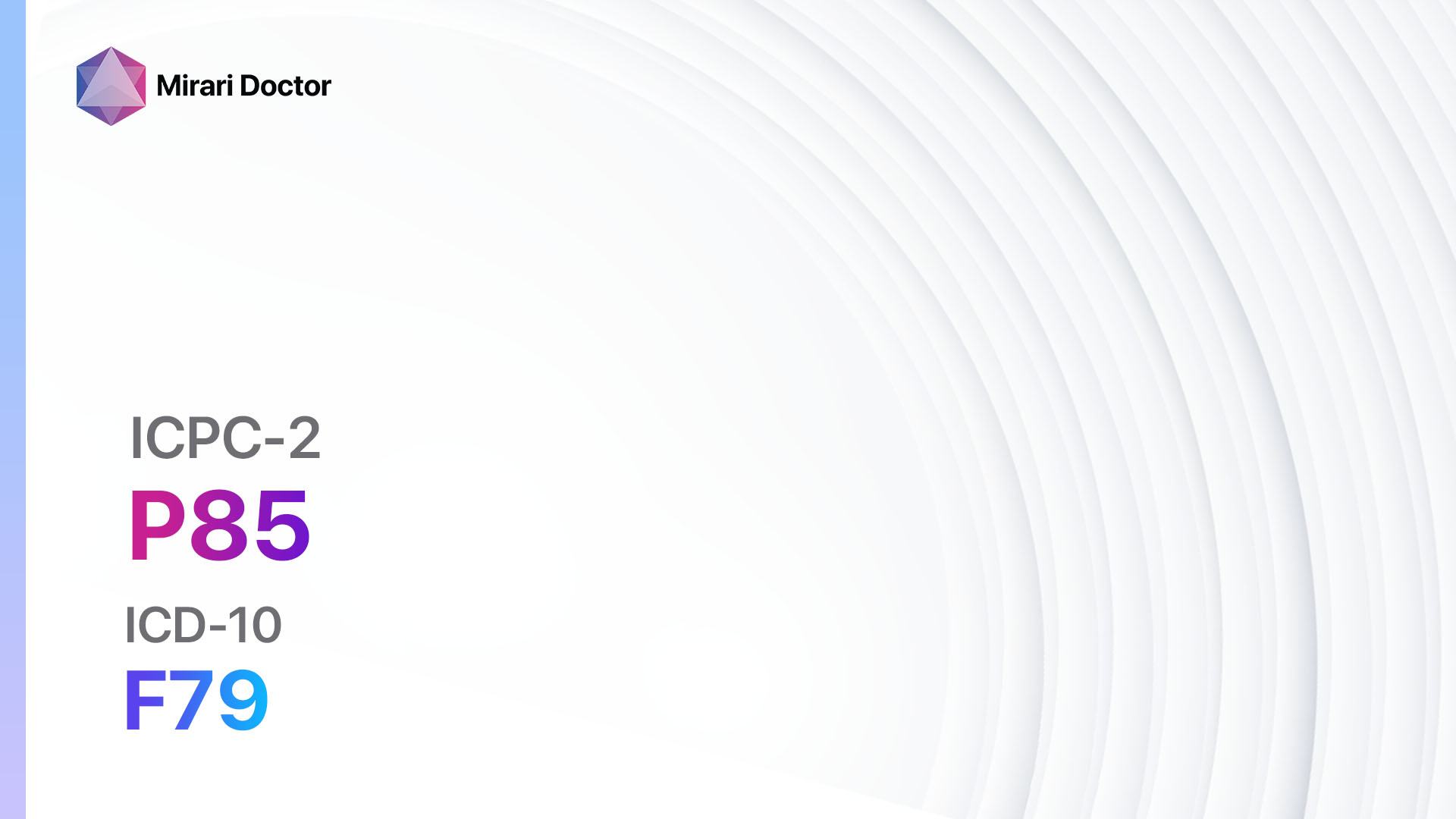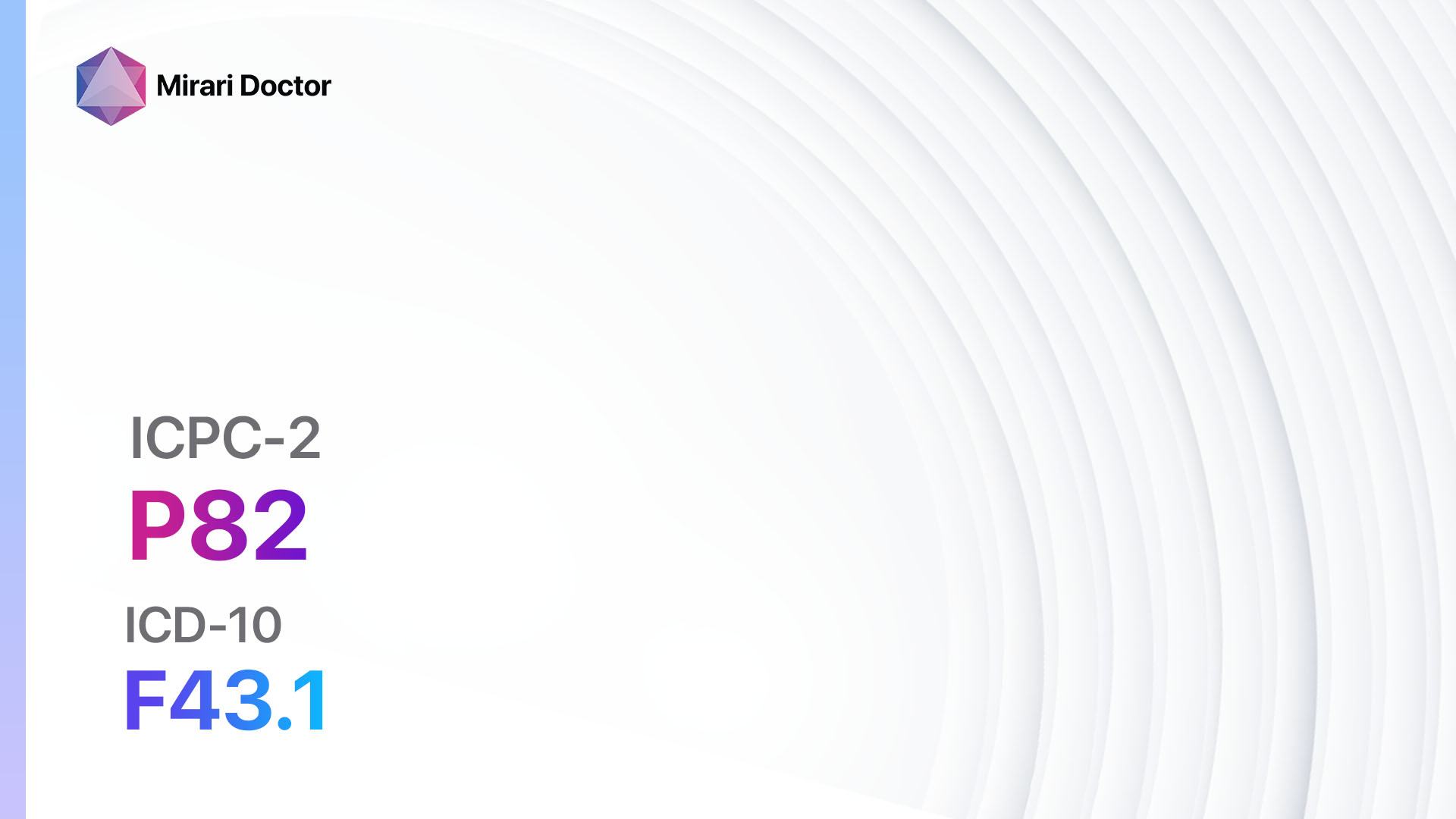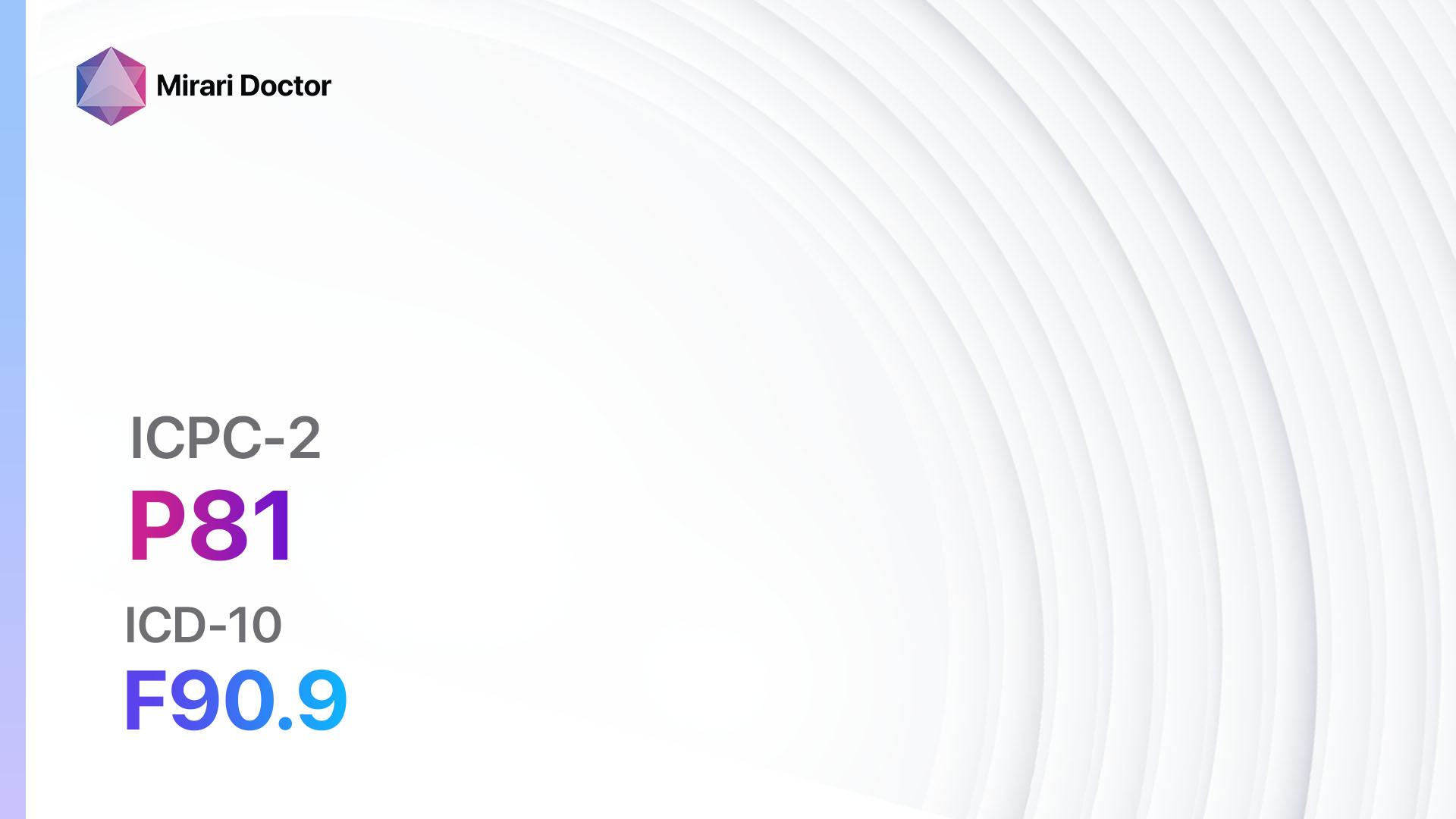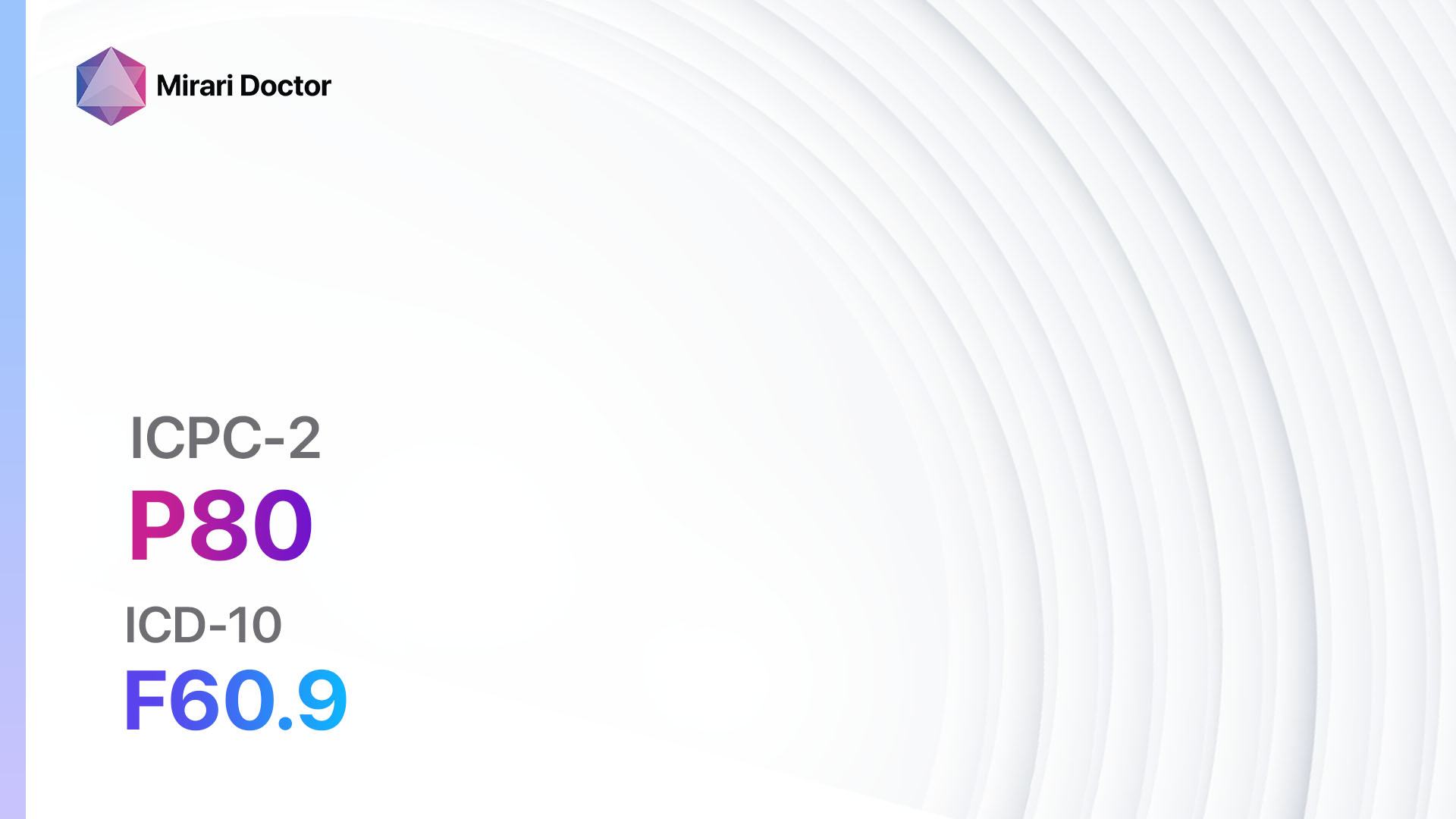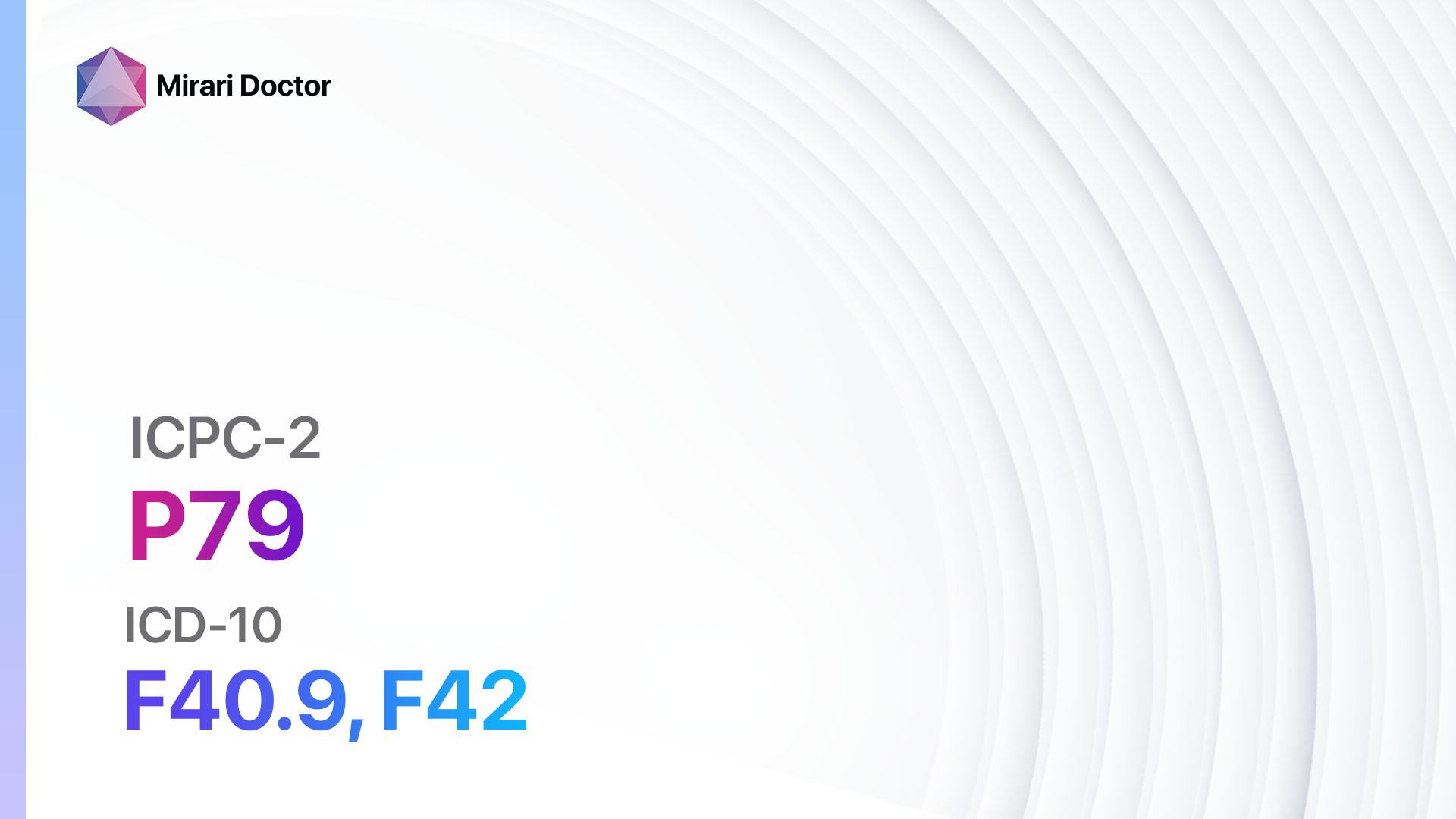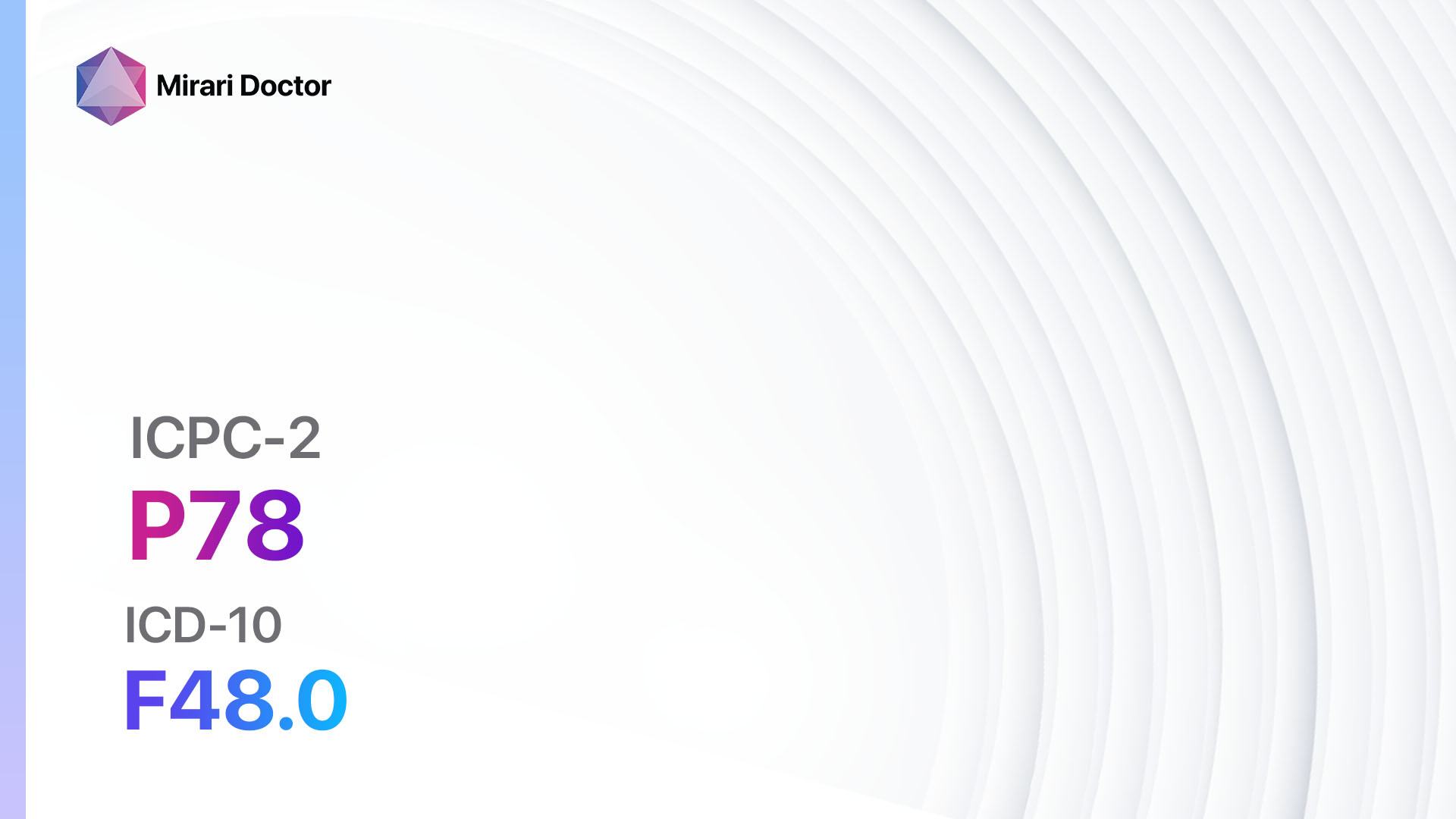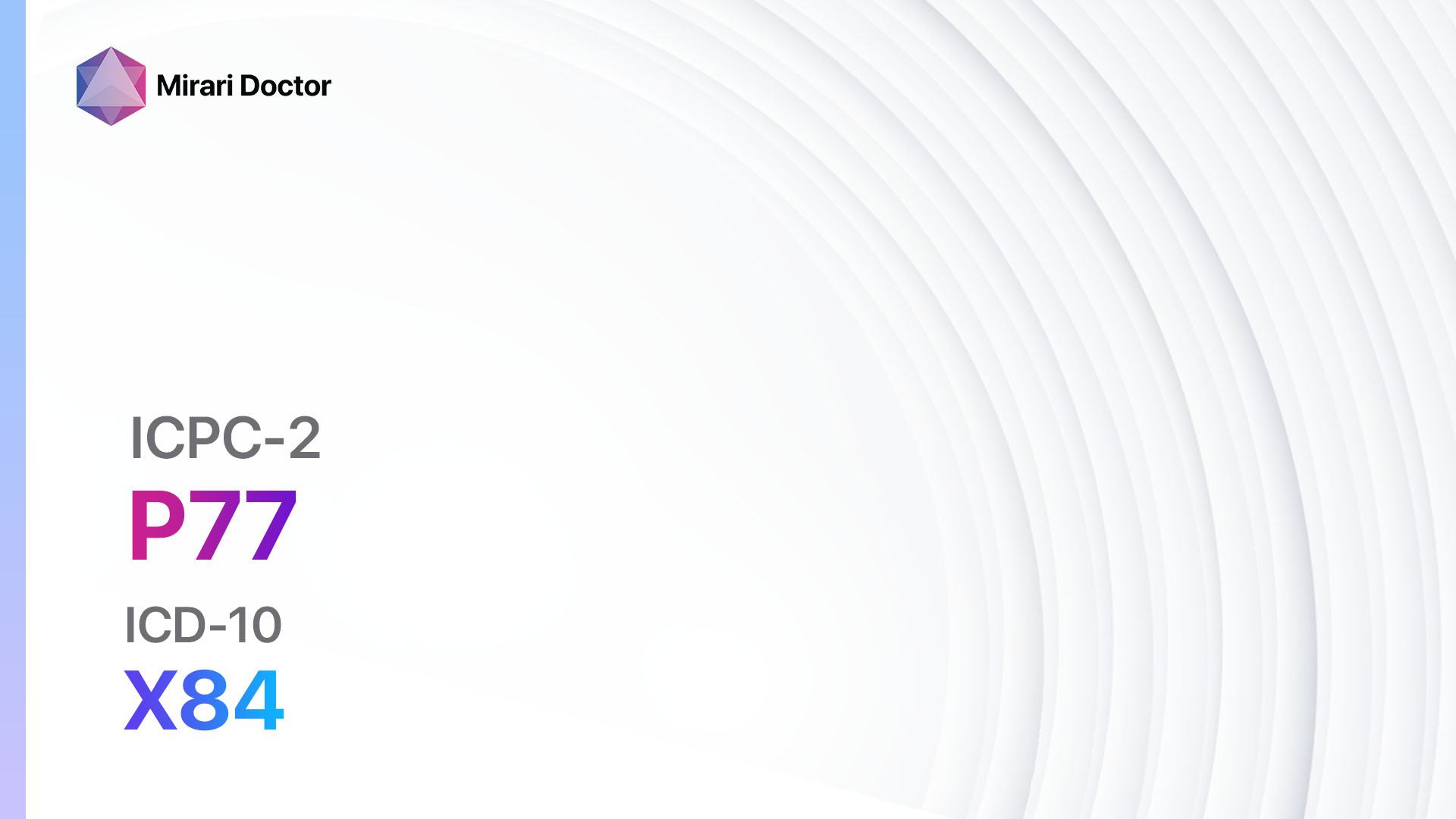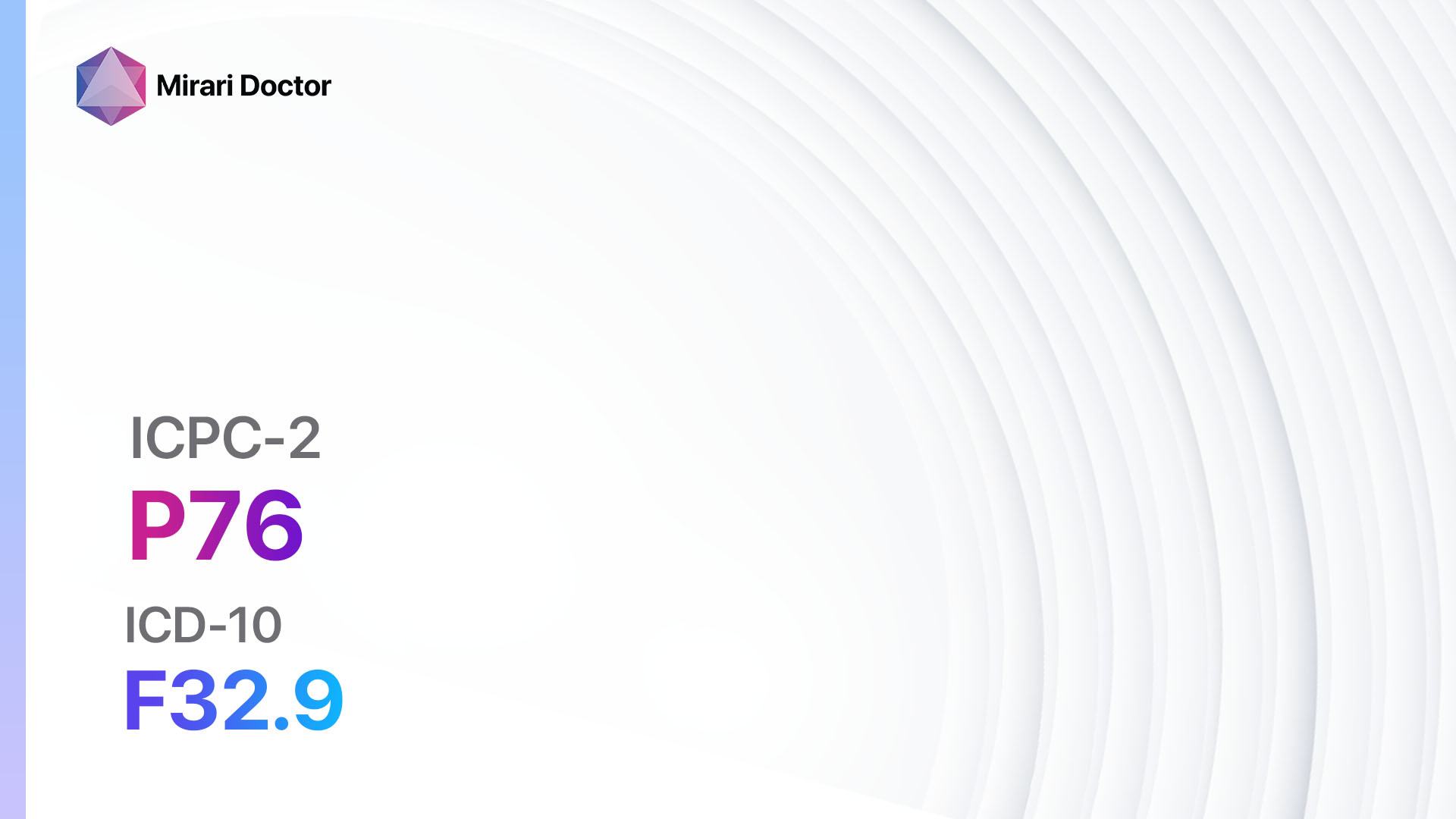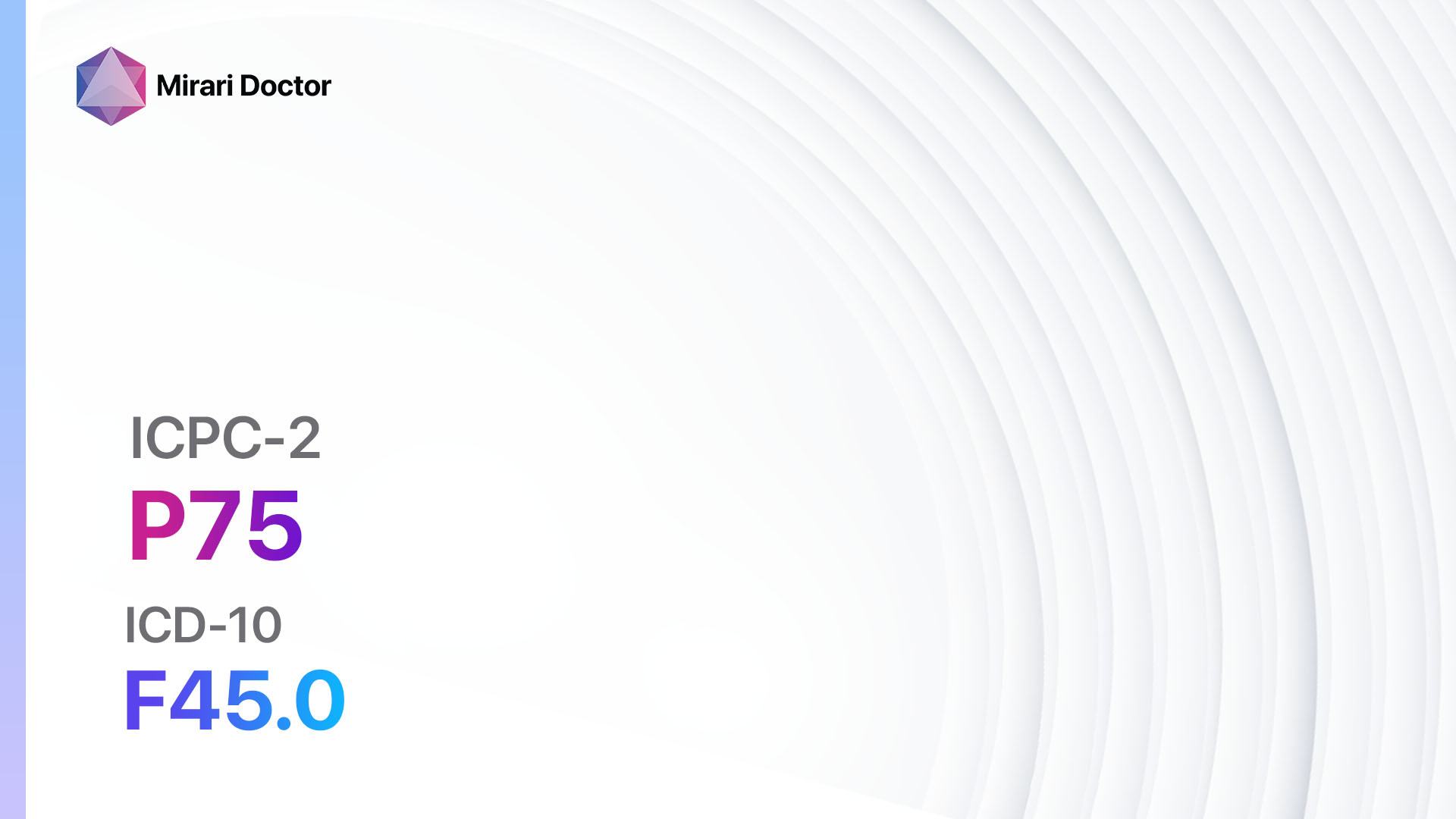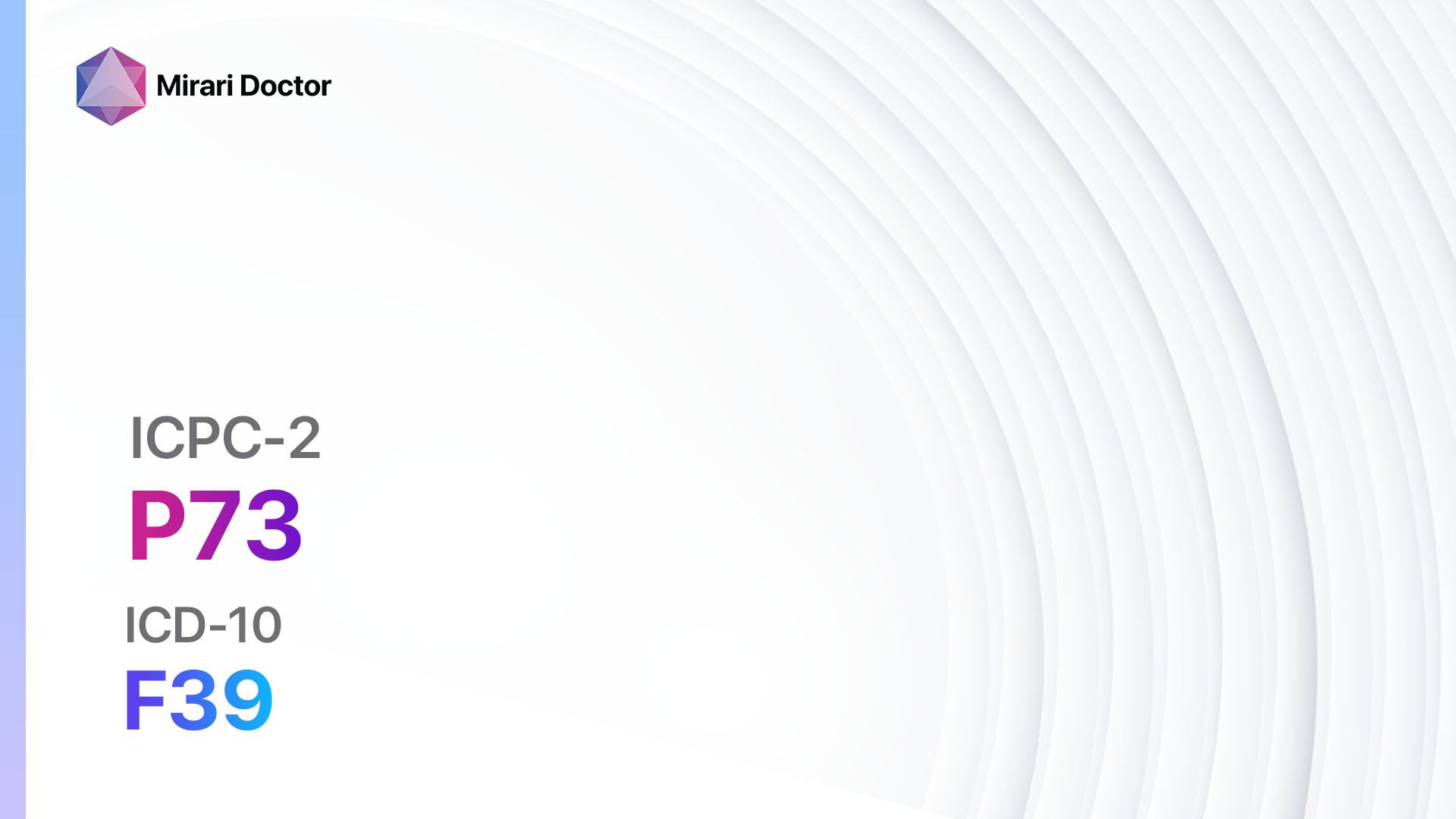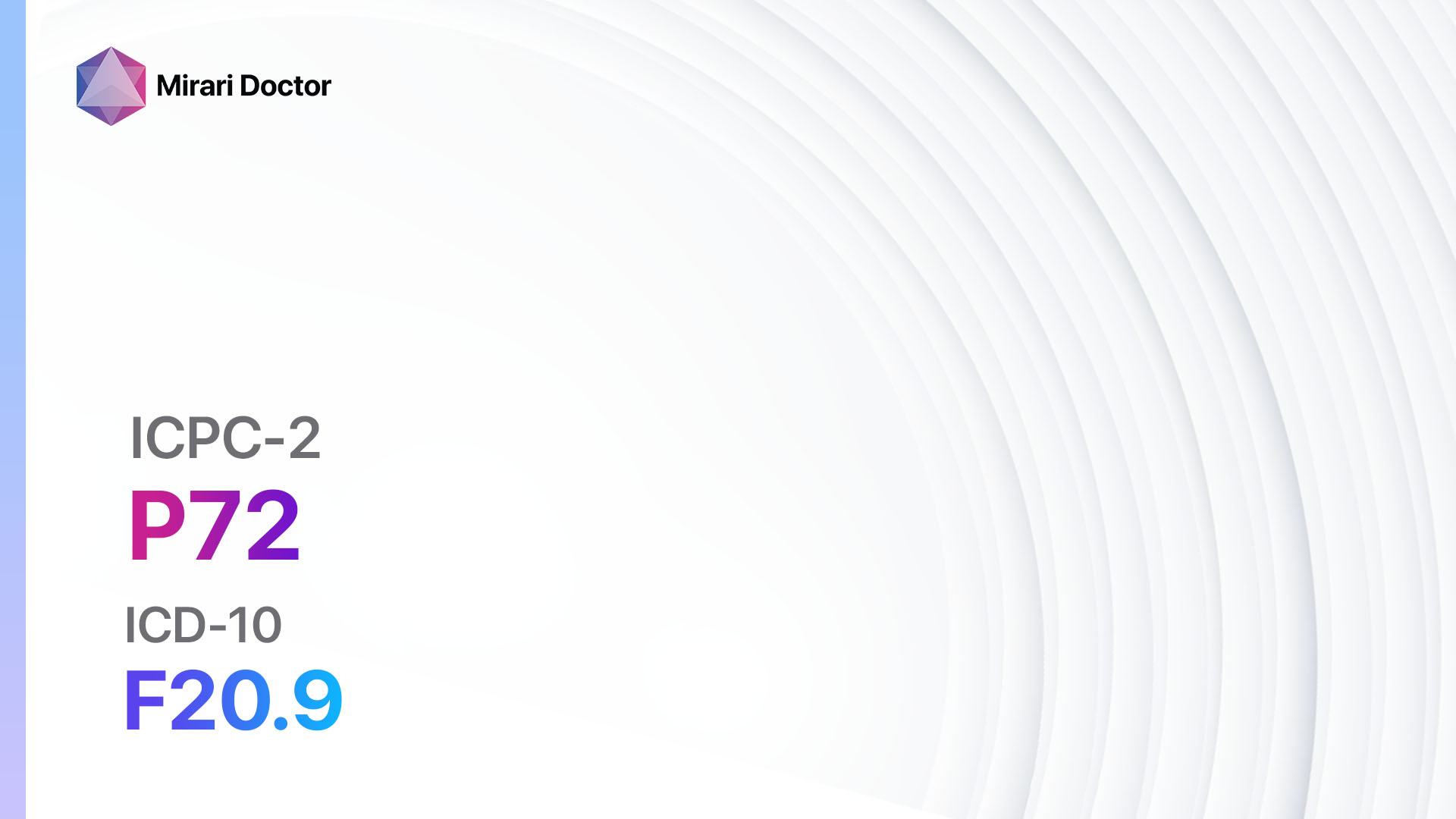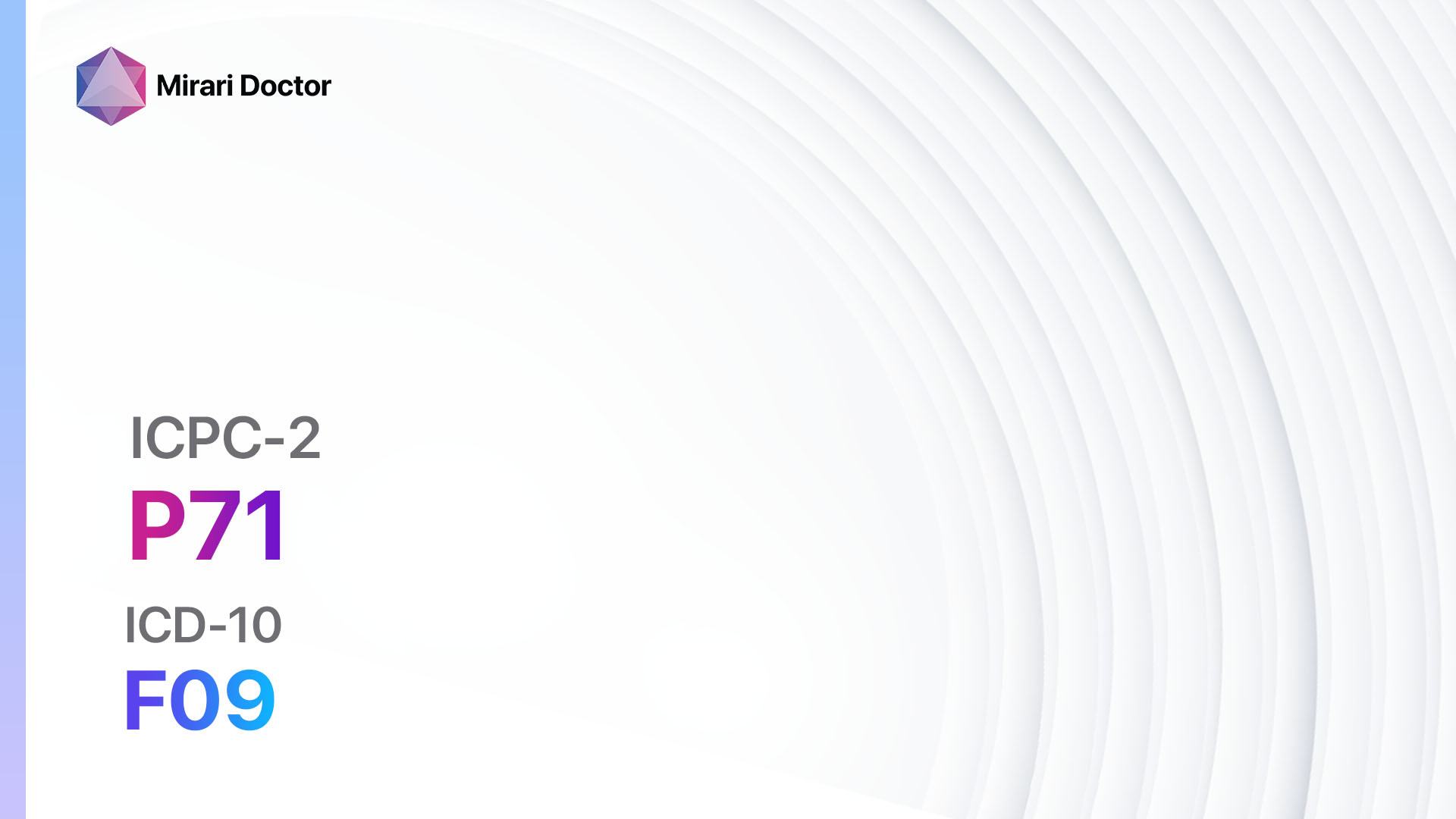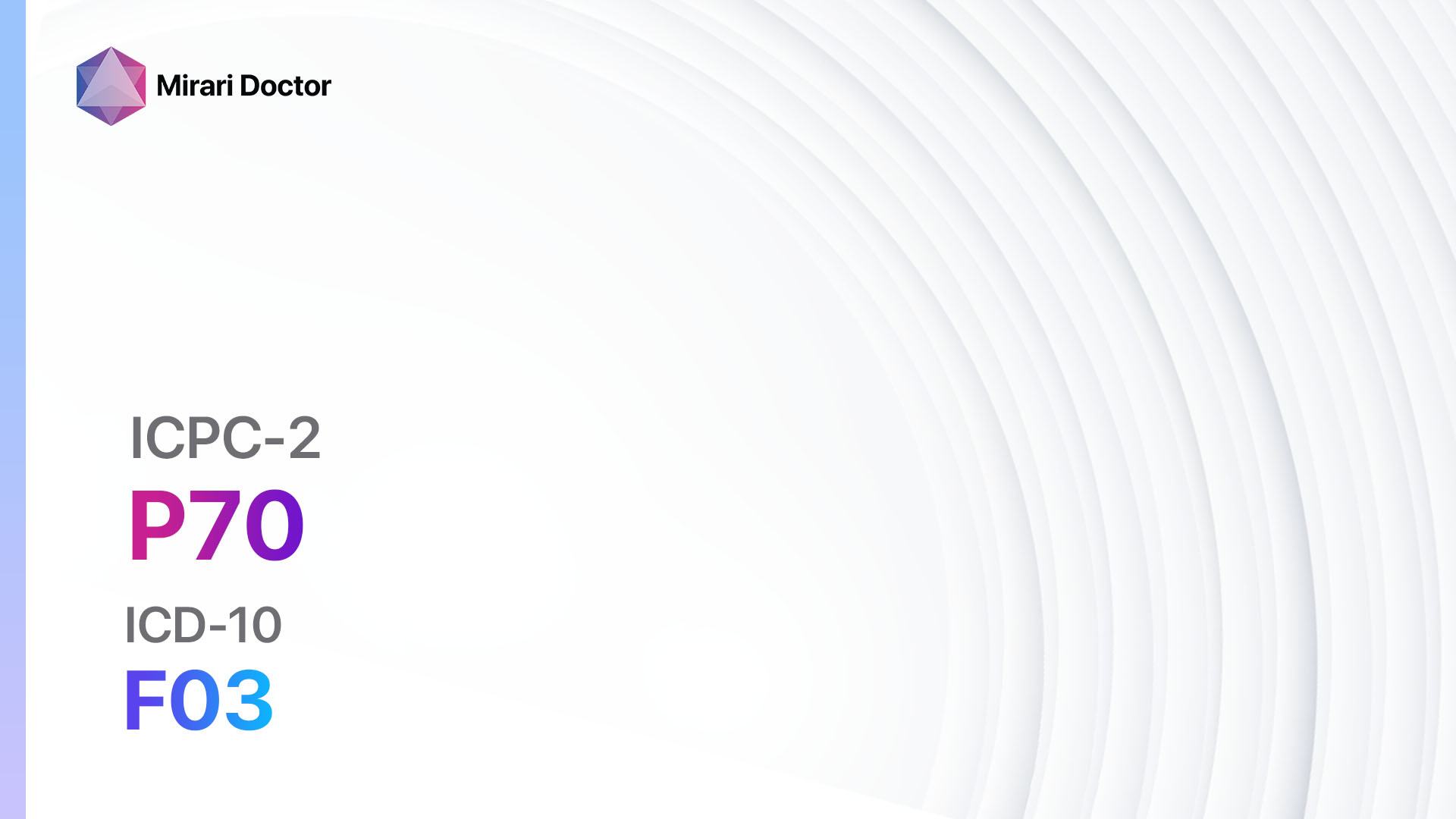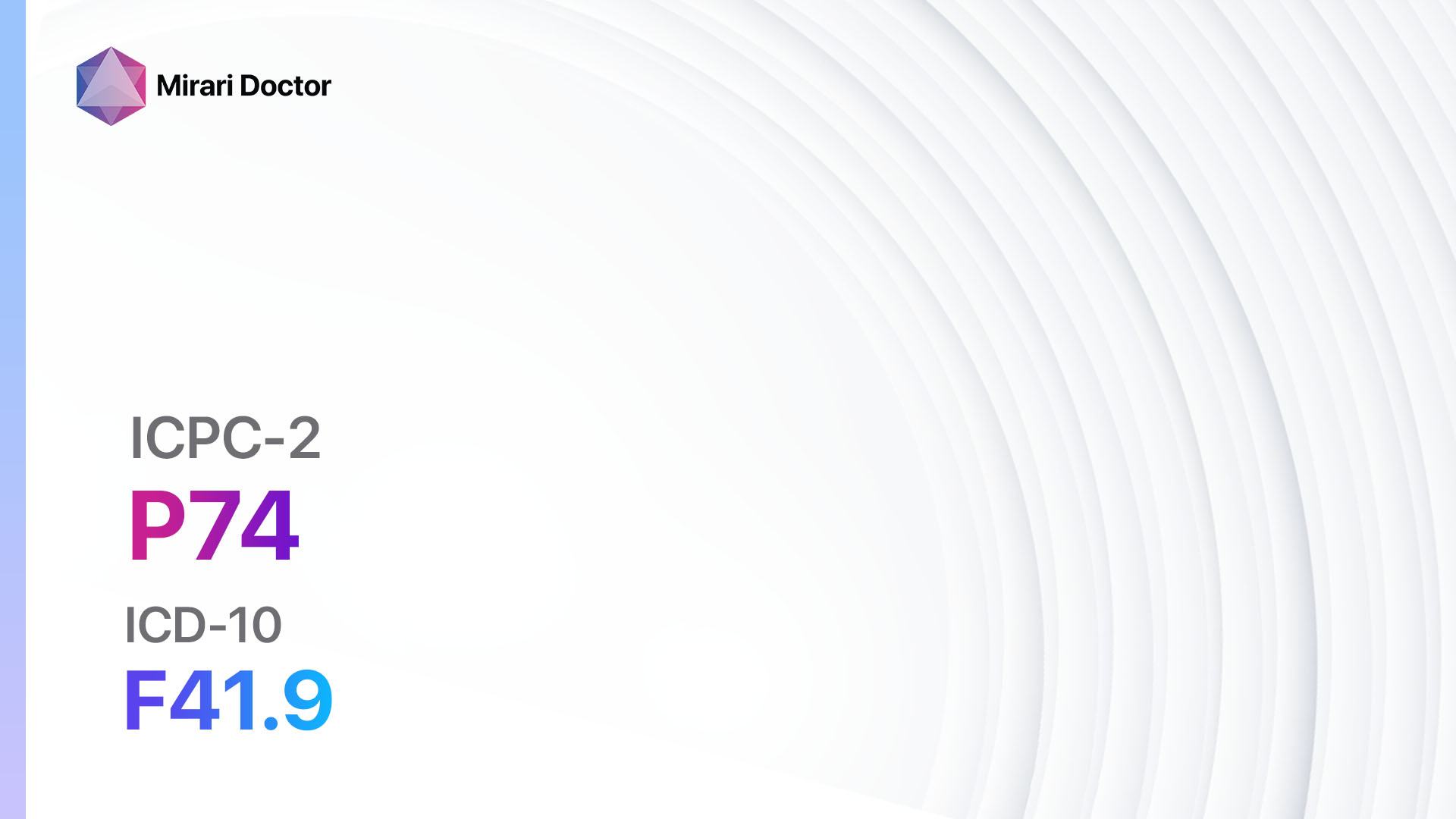
Introduction
Anxiety disorder, also known as anxiety state, is a common mental health condition characterized by excessive and persistent worry, fear, and apprehension[1]. It can significantly impact a person’s daily life, relationships, and overall well-being[2]. The aim of this guide is to provide a comprehensive overview of anxiety disorder, including its symptoms, causes, diagnostic steps, possible interventions, and lifestyle interventions.
Codes
Symptoms
- Excessive worry and fear[3]
- Restlessness and irritability[4]
- Difficulty concentrating[5]
- Sleep disturbances[6]
- Muscle tension and headaches[7]
- Rapid heartbeat and shortness of breath[8]
- Sweating and trembling[9]
Anxiety disorder can present with a wide range of symptoms, and the severity and frequency of these symptoms may vary among individuals. It is important to note that anxiety disorder can coexist with other mental health conditions, such as depression or substance abuse[10].
Causes
- Genetic factors
- Brain chemistry and imbalances in neurotransmitters
- Environmental factors, such as traumatic events or chronic stress
- Medical conditions, such as thyroid disorders or heart disease
- Substance abuse or withdrawal
The exact cause of anxiety disorder is not fully understood, but it is believed to be a combination of genetic, environmental, and physiological factors. Certain risk factors, such as a family history of anxiety disorders or a history of trauma, may increase the likelihood of developing the condition.
Diagnostic Steps
Medical History
- Gather information about the patient’s symptoms, including the duration, frequency, and severity.
- Assess the patient’s medical history, including any previous mental health conditions or substance abuse.
- Identify any potential triggers or stressors that may contribute to the anxiety symptoms.
- Evaluate the patient’s family history of anxiety disorders or other mental health conditions.
Physical Examination
- Perform a thorough physical examination to rule out any underlying medical conditions that may be causing or exacerbating the anxiety symptoms.
- Assess vital signs, including heart rate, blood pressure, and respiratory rate.
- Look for physical signs of anxiety, such as restlessness, trembling, or sweating.
- Evaluate the patient’s overall appearance and behavior for any signs of distress or agitation.
Laboratory Tests
- Blood tests: Measure thyroid function, as thyroid disorders can mimic symptoms of anxiety. Additionally, blood tests may be used to rule out other medical conditions that may be contributing to the anxiety symptoms.
- Urine drug screen: Screen for substance abuse, as certain substances can cause or worsen anxiety symptoms.
- Other specialized assays: In some cases, specialized tests may be ordered to assess neurotransmitter levels or hormonal imbalances.
Diagnostic Imaging
- Diagnostic imaging is not typically used in the diagnosis of anxiety disorder, as it is primarily a mental health condition. However, in some cases, imaging studies, such as MRI or CT scans, may be ordered to rule out other potential causes of the symptoms, such as brain tumors or structural abnormalities.
Other Tests
- Psychological assessments: Various psychological tests and questionnaires may be used to assess the severity and impact of anxiety symptoms on the patient’s daily life.
- Sleep studies: If sleep disturbances are a prominent symptom, a sleep study may be ordered to evaluate for any underlying sleep disorders, such as sleep apnea or insomnia.
Follow-up and Patient Education
- Schedule regular follow-up appointments to monitor the patient’s progress and adjust treatment as needed.
- Provide education to the patient and their family about anxiety disorder, its causes, and available treatment options.
- Encourage the patient to engage in self-care practices, such as stress management techniques, regular exercise, and healthy lifestyle habits.
- Offer resources and support groups for individuals with anxiety disorder to connect with others who may be experiencing similar challenges.
Possible Interventions
Traditional Interventions
Medications:
Top 5 drugs for Anxiety disorder/anxiety state:
- Selective serotonin reuptake inhibitors (SSRIs) (e.g., Sertraline, Escitalopram, Fluoxetine):
- Cost: Generic versions can be $10-$50/month.
- Contraindications: Hypersensitivity to SSRIs, concurrent use of MAO inhibitors.
- Side effects: Nausea, headache, sexual dysfunction.
- Severe side effects: Serotonin syndrome, suicidal thoughts.
- Drug interactions: MAO inhibitors, NSAIDs, St. John’s wort.
- Warning: May take several weeks to achieve full effect.
- Benzodiazepines (e.g., Alprazolam, Lorazepam, Diazepam):
- Cost: Generic versions can be $10-$30/month.
- Contraindications: History of substance abuse, respiratory depression.
- Side effects: Drowsiness, dizziness, confusion.
- Severe side effects: Respiratory depression, dependence.
- Drug interactions: Alcohol, opioids, other sedatives.
- Warning: Potential for addiction and withdrawal symptoms.
- Buspirone:
- Cost: Generic versions can be $10-$30/month.
- Contraindications: Hypersensitivity to buspirone, concurrent use of MAO inhibitors.
- Side effects: Dizziness, headache, nausea.
- Severe side effects: Serotonin syndrome, allergic reactions.
- Drug interactions: MAO inhibitors, grapefruit juice.
- Warning: Takes several weeks to achieve full effect.
- Tricyclic antidepressants (e.g., Amitriptyline, Imipramine):
- Cost: Generic versions can be $10-$30/month.
- Contraindications: Recent myocardial infarction, glaucoma.
- Side effects: Dry mouth, constipation, blurred vision.
- Severe side effects: Cardiac arrhythmias, seizures.
- Drug interactions: MAO inhibitors, anticholinergic drugs.
- Warning: May cause sedation and drowsiness.
- Beta-blockers (e.g., Propranolol, Atenolol):
- Cost: Generic versions can be $10-$30/month.
- Contraindications: Severe bradycardia, heart failure.
- Side effects: Fatigue, dizziness, cold hands and feet.
- Severe side effects: Bronchospasm, heart block.
- Drug interactions: Calcium channel blockers, insulin.
- Warning: Should not be abruptly stopped.
Alternative Drugs:
- Hydroxyzine: An antihistamine with anxiolytic properties.
- Pregabalin: An anticonvulsant used for generalized anxiety disorder.
- Mirtazapine: An atypical antidepressant with anxiolytic effects.
- Gabapentin: An anticonvulsant used off-label for anxiety.
- Quetiapine: An atypical antipsychotic used for anxiety and insomnia.
Therapy:
- Cognitive-behavioral therapy (CBT): A type of psychotherapy that helps individuals identify and change negative thought patterns and behaviors associated with anxiety.
- Exposure therapy: A form of CBT that gradually exposes individuals to feared situations or objects to reduce anxiety.
- Acceptance and commitment therapy (ACT): Focuses on accepting anxious thoughts and feelings while committing to actions aligned with personal values.
- Mindfulness-based stress reduction (MBSR): Combines mindfulness meditation, yoga, and body awareness to reduce anxiety and stress.
- Supportive therapy: Provides emotional support and guidance to individuals with anxiety disorder.
Alternative Interventions
- Acupuncture: May help reduce anxiety symptoms by promoting relaxation and balancing energy flow. Cost: $60-$120 per session.
- Yoga and meditation: Can help reduce anxiety and promote relaxation. Cost: Varies depending on the location and type of classes.
- Herbal supplements: Some herbs, such as lavender, chamomile, and passionflower, may have calming effects. Cost: Varies depending on the specific supplement.
- Massage therapy: Can help reduce muscle tension and promote relaxation. Cost: $50-$100 per session.
- Exercise: Regular physical activity has been shown to reduce anxiety symptoms. Cost: Varies depending on the type of exercise and location.
Lifestyle Interventions
- Stress management techniques: Encourage the patient to practice stress-reducing activities, such as deep breathing exercises, progressive muscle relaxation, or journaling.
- Healthy lifestyle habits: Emphasize the importance of a balanced diet, regular exercise, and adequate sleep in managing anxiety symptoms.
- Limit caffeine and alcohol intake: Both caffeine and alcohol can worsen anxiety symptoms and interfere with sleep.
- Social support: Encourage the patient to seek support from friends, family, or support groups to help manage anxiety.
- Time management: Teach the patient effective time management skills to reduce feelings of overwhelm and stress.
It is important to note that the cost ranges provided are approximate and may vary depending on the location and availability of the interventions. It is recommended to consult with a healthcare professional for personalized treatment recommendations and cost estimates.
Mirari Cold Plasma Alternative Intervention
Understanding Mirari Cold Plasma
- Safe and Non-Invasive Treatment: Mirari Cold Plasma is a safe and non-invasive treatment option for various skin conditions. It does not require incisions, minimizing the risk of scarring, bleeding, or tissue damage.
- Efficient Extraction of Foreign Bodies: Mirari Cold Plasma facilitates the removal of foreign bodies from the skin by degrading and dissociating organic matter, allowing easier access and extraction.
- Pain Reduction and Comfort: Mirari Cold Plasma has a local analgesic effect, providing pain relief during the treatment, making it more comfortable for the patient.
- Reduced Risk of Infection: Mirari Cold Plasma has antimicrobial properties, effectively killing bacteria and reducing the risk of infection.
- Accelerated Healing and Minimal Scarring: Mirari Cold Plasma stimulates wound healing and tissue regeneration, reducing healing time and minimizing the formation of scars.
Mirari Cold Plasma Prescription
Video instructions for using Mirari Cold Plasma Device – P74 Anxiety disorder/anxiety state (ICD-10:F41.9)
| Mild | Moderate | Severe |
| Mode setting: 2 (Wound Healing) Location: 7 (Neuro system & ENT) Morning: 15 minutes, Evening: 15 minutes |
Mode setting: 2 (Wound Healing) Location: 7 (Neuro system & ENT) Morning: 30 minutes, Lunch: 30 minutes, Evening: 30 minutes |
Mode setting: 2 (Wound Healing) Location: 7 (Neuro system & ENT) Morning: 30 minutes, Lunch: 30 minutes, Evening: 30 minutes |
| Mode setting: 7 (Immunotherapy) Location: 1 (Sacrum) Morning: 15 minutes, Evening: 15 minutes |
Mode setting: 7 (Immunotherapy) Location: 1 (Sacrum) Morning: 30 minutes, Lunch: 30 minutes, Evening: 30 minutes |
Mode setting: 7 (Immunotherapy) Location: 1 (Sacrum) Morning: 30 minutes, Lunch: 30 minutes, Evening: 30 minutes |
| Total Morning: 30 minutes approx. $5 USD, Evening: 30 minutes approx. $5 USD |
Total Morning: 60 minutes approx. $10 USD, Lunch: 60 minutes approx. $10 USD, Evening: 60 minutes approx. $10 USD, |
Total Morning: 60 minutes approx. $10 USD, Lunch: 60 minutes approx. $10 USD, Evening: 60 minutes approx. $10 USD, |
| Usual treatment for 7-60 days approx. $70 USD – $600 USD | Usual treatment for 6-8 weeks approx. $1,260 USD – $1,680 USD |
Usual treatment for 3-6 months approx. $2,700 USD – $5,400 USD
|
 |
|
Use the Mirari Cold Plasma device to treat Anxiety disorder/anxiety state effectively.
WARNING: MIRARI COLD PLASMA IS DESIGNED FOR THE HUMAN BODY WITHOUT ANY ARTIFICIAL OR THIRD PARTY PRODUCTS. USE OF OTHER PRODUCTS IN COMBINATION WITH MIRARI COLD PLASMA MAY CAUSE UNPREDICTABLE EFFECTS, HARM OR INJURY. PLEASE CONSULT A MEDICAL PROFESSIONAL BEFORE COMBINING ANY OTHER PRODUCTS WITH USE OF MIRARI.
Step 1: Cleanse the Skin
- Start by cleaning the affected area of the skin with a gentle cleanser or mild soap and water. Gently pat the area dry with a clean towel.
Step 2: Prepare the Mirari Cold Plasma device
- Ensure that the Mirari Cold Plasma device is fully charged or has fresh batteries as per the manufacturer’s instructions. Make sure the device is clean and in good working condition.
- Switch on the Mirari device using the power button or by following the specific instructions provided with the device.
- Some Mirari devices may have adjustable settings for intensity or treatment duration. Follow the manufacturer’s instructions to select the appropriate settings based on your needs and the recommended guidelines.
Step 3: Apply the Device
- Place the Mirari device in direct contact with the affected area of the skin. Gently glide or hold the device over the skin surface, ensuring even coverage of the area experiencing.
- Slowly move the Mirari device in a circular motion or follow a specific pattern as indicated in the user manual. This helps ensure thorough treatment coverage.
Step 4: Monitor and Assess:
- Keep track of your progress and evaluate the effectiveness of the Mirari device in managing your Anxiety disorder/anxiety state. If you have any concerns or notice any adverse reactions, consult with your health care professional.
Note
This guide is for informational purposes only and should not replace the advice of a medical professional. Always consult with your healthcare provider or a qualified medical professional for personal advice, diagnosis, or treatment. Do not solely rely on the information presented here for decisions about your health. Use of this information is at your own risk. The authors of this guide, nor any associated entities or platforms, are not responsible for any potential adverse effects or outcomes based on the content.
Mirari Cold Plasma System Disclaimer
- Purpose: The Mirari Cold Plasma System is a Class 2 medical device designed for use by trained healthcare professionals. It is registered for use in Thailand and Vietnam. It is not intended for use outside of these locations.
- Informational Use: The content and information provided with the device are for educational and informational purposes only. They are not a substitute for professional medical advice or care.
- Variable Outcomes: While the device is approved for specific uses, individual outcomes can differ. We do not assert or guarantee specific medical outcomes.
- Consultation: Prior to utilizing the device or making decisions based on its content, it is essential to consult with a Certified Mirari Tele-Therapist and your medical healthcare provider regarding specific protocols.
- Liability: By using this device, users are acknowledging and accepting all potential risks. Neither the manufacturer nor the distributor will be held accountable for any adverse reactions, injuries, or damages stemming from its use.
- Geographical Availability: This device has received approval for designated purposes by the Thai and Vietnam FDA. As of now, outside of Thailand and Vietnam, the Mirari Cold Plasma System is not available for purchase or use.
References
- American Psychiatric Association. (2013). Diagnostic and statistical manual of mental disorders (5th ed.). https://doi.org/10.1176/appi.books.9780890425596
- Kessler, R. C., Petukhova, M., Sampson, N. A., Zaslavsky, A. M., & Wittchen, H.-U. (2012). Twelve-month and lifetime prevalence and lifetime morbid risk of anxiety and mood disorders in the United States. International Journal of Methods in Psychiatric Research, 21(3), 169–184. https://doi.org/10.1002/mpr.1359
- Bystritsky, A., Khalsa, S. S., Cameron, M. E., & Schiffman, J. (2013). Current diagnosis and treatment of anxiety disorders. P & T: A Peer-Reviewed Journal for Formulary Management, 38(1), 30–57.
- Craske, M. G., & Stein, M. B. (2016). Anxiety. Lancet (London, England), 388(10063), 3048–3059. https://doi.org/10.1016/S0140-6736(16)30381-6
- Eysenck, M. W., Derakshan, N., Santos, R., & Calvo, M. G. (2007). Anxiety and cognitive performance: attentional control theory. Emotion (Washington, D.C.), 7(2), 336–353. https://doi.org/10.1037/1528-3542.7.2.336
- Roth, T. (2007). Insomnia: definition, prevalence, etiology, and consequences. Journal of Clinical Sleep Medicine: JCSM: Official Publication of the American Academy of Sleep Medicine, 3(5 Suppl), S7–S10.
- Pluess, M., Conrad, A., & Wilhelm, F. H. (2009). Muscle tension in generalized anxiety disorder: a critical review of the literature. Journal of Anxiety Disorders, 23(1), 1–11. https://doi.org/10.1016/j.janxdis.2008.03.016
- Hoehn-Saric, R., & McLeod, D. R. (2000). Anxiety and arousal: physiological changes and their perception. Journal of Affective Disorders, 61(3), 217–224. https://doi.org/10.1016/s0165-0327(00)00339-6
- Hoehn-Saric, R., McLeod, D. R., & Zimmerli, W. D. (1989). Somatic manifestations in women with generalized anxiety disorder. Psychophysiological responses to psychological stress. Archives of General Psychiatry, 46(12), 1113–1119. https://doi.org/10.1001/archpsyc.1989.01810120055009
- Hirschfeld, R. M. (2001). The Comorbidity of Major Depression and Anxiety Disorders: Recognition and Management in Primary Care. Primary Care Companion to the Journal of Clinical Psychiatry, 3(6), 244–254. https://doi.org/10.4088/pcc.v03n0609
Related articles
Made in USA


